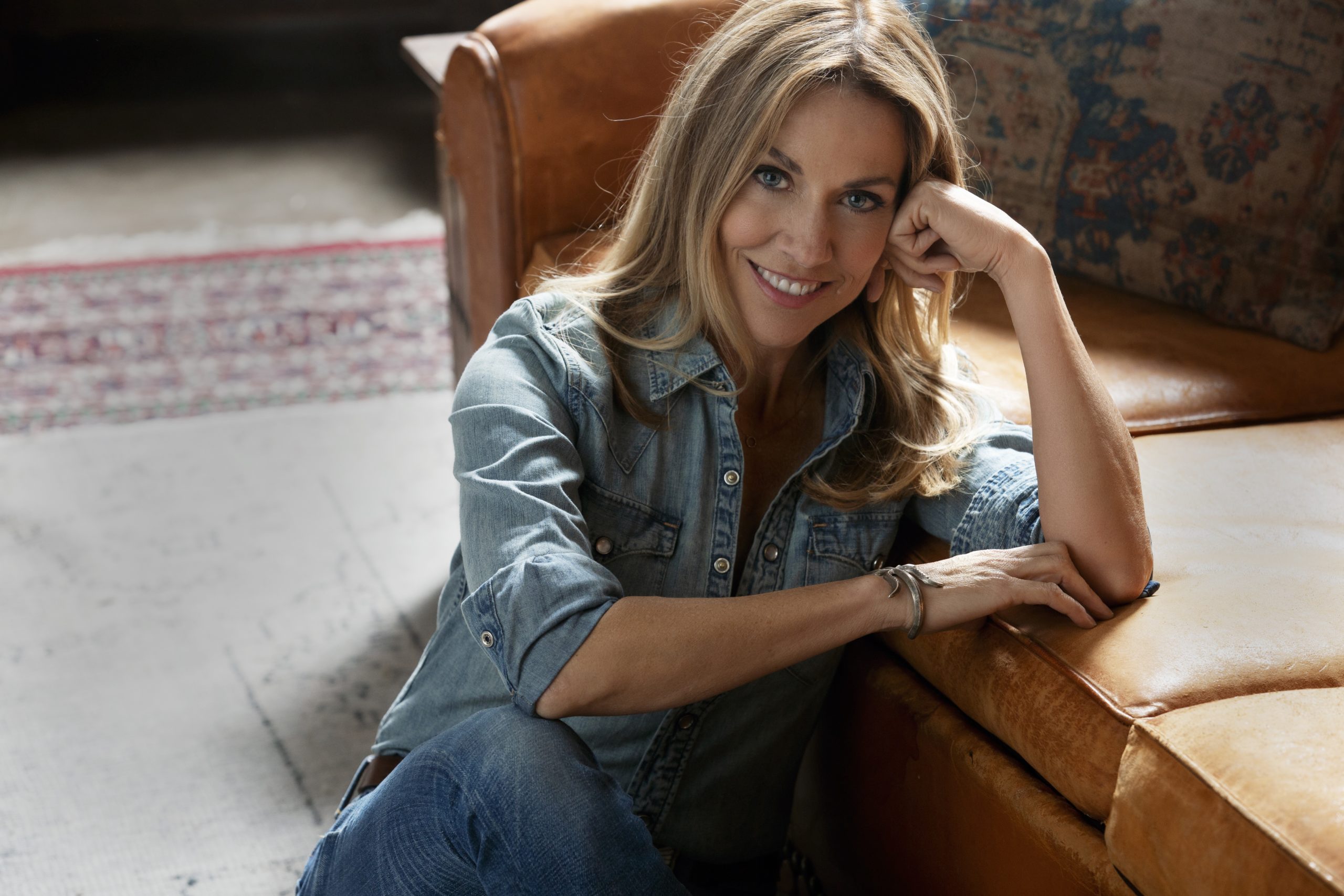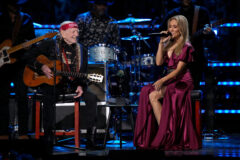Hello, my name is Corbin Reiff. I’m a music writer based out of Seattle and the author of ‘Total F*cking Godhead: The Biography of Chris Cornell.’ Welcome to my new monthly column The Offramp!
In this space, I’ll chat with and write about some of the best and brightest minds in the music world today about a wide range of different and fascinating topics from new albums, old masterpieces, legendary tours, and the future of music itself. Thanks for coming along for the ride. At the very least, I promise the soundtrack won’t suck!
More than just a generational songwriter, more than a generous and thoughtful collaborator, more than just about anything else in fact, Sheryl Crow is a one-of-a-kind rock and roll frontwoman. Over the last three decades, the Missouri-native has fired up crowds from Memphis to Madrid bringing to life her singular collection of hits and deep cuts, backed by her crack band of heavy-hitting headhunters. To be in the audience for a Sheryl Crow show is to enjoy a night of music you’re liable to remember forever. To be on the bill for a Sheryl Crow show is to risk being completely, and utterly upstaged by one of the best to ever do it. Every night is a new chance to achieve transcendence.
“I love what Bob Dylan said about recording,” Crow told SPIN over the phone. “You record a song, then you go out on the road and for the rest of your life, you’re looking for the perfect version of that song. You don’t really even know what the song is when you’re recording in the studio, unless you’ve gone out and played it live and had it sort of unfold for you with all the molecular energy going in the room.”
While most of us spent the last year and a half hunkered down, yearning for a return to in-person, live entertainment, Crow utilized the time to assemble the greatest exhibit yet of her unmatched performance powers; a new record album titled Live at The Ryman and More. The behemoth, 27-track collection — about 10 songs larger than her typical set — was largely recorded in Nashville in 2019, just after she released what she purports to be her final, studio album Threads. It’s a thrilling document filled with searing and emotive takes on her most beloved material, along with a wide range of guest appearances from the likes of Stevie Nicks, Brandi Carlile, Jason Isbell, Maren Morris, Lucius, and Emmylou Harris to name just a few.
“We had some amazing experiences in the course of that really short Threads tour. And one of them was the Newport Folk Festival and one of them was being able to play at the Ace Theater,” Crow said. “I spent 22 years of my life living in L.A. and I have amazing memories there and also great friends who still live there. One of those great friends — not only a great friend, but a hero of mine — is Stevie Nicks. To be able to collaborate with her there, it just felt like it needed to be a part of the record.”
More than just a live record, however, Live at the Ryman and More is an expansive and immediate portrait of Crow’s incredible, winding career. It’s a musical memoir, with Frampton Comes Alive style crowd participation. From Tuesday Night Music Club to Threads, and “If It Makes You Happy” to “All I Wanna Do,” the full gamut of Crow’s impressive songwriting and impeccable musicianship on full display in this two-and-a-half-hour set in the Mother Church of Country Music.
“I do believe that the physical registers, just like with a guitar in the wood,” Crow said. “Whoever has held a guitar next to their body and has played and their soul has been a part of that guitar making it sounds. That’s how the Ryman is. Everybody that has ever stood on that stage has left something in that room.”
Recently, SPIN had the opportunity to talk to her about some of the best and worst concert memories – spoiler, Woodstock ’99 doesn’t exactly hold a warm place in her heart — what it’s like to pick Bob Dylan’s brain for advice, her love of the Milwaukee Bucks, and that time she made her parents cry while singing with Pavarotti in Italy…

What’s the funniest or weirdest thing that’s ever happened to you in the middle of a show?
Oh, gosh. Okay. I can’t remember where we were, someplace out West — it was an outside gig — but I dropped my guitar on my toe, and it broke my toenail in two. It really hurt, but not until I was about halfway through “Leaving Las Vegas,” when I looked down and realized there was blood everywhere. And the audience, the ones that were close up front, could see that I was just standing in this big pool of blood around us. It ruined a very smart pair of LeMieux platforms. So that wasn’t so funny, but it was definitely one of the oddest things that ever happened.
What are one or two must-have items on the rider?
Used to be, it was clean socks and postcards, but now I guess as adults, we bring our own clean socks. I’m a much gentler version of myself, so two beers is my limit, maybe three, Miller Lights. I’m pretty easy now. That’s all I require. Other than that, we usually have dark chocolate and some nuts and that’s about it.
Obviously, it’s been in the news again lately because there’s been an HBO documentary about it, but can you recall what your experience was like at Woodstock ’99?
It was weird. I mean, having played at Woodstock a few years before, not the original, but the one that was in, I think 1994, that was such a beautiful event and it felt like it paid such beautiful homage to the original one. This was completely the antithesis of that. In fact, I think I saw an interview with me saying something about how it was just a bunch of privileged white kids who were acting out, tearing things up and girls on guys shoulders, topless, trying to get on camera and on MTV. The whole thing was so debauched. People were throwing, not only pennies up on stage at us, but also at our hands. Also, the Johnny on the Spot overflowed, and they were throwing…I’ll say feces. I mean, it just was a vile experience, and it was commerce at its worst, where they were overcharging for bottles of water, wouldn’t let kids bring their own water or food in. It was just a bad, bad event.
To kind of flip on that, do you have any sort of transcendent concert memories? Some moments on stage that really stand out for you?
I mean, I have so many of those, it’s just crazy. I mean, I can remember singing Mozart with Pavarotti in Modena, Italy, and looking out and seeing my parents and my mom and dad both totally tearing up. And Eric Clapton’s in the band, you know? That was a big moment.
Another big moment would have been, even just last year or two years ago, playing at Bonnaroo and looking out and seeing, I don’t know, how many tens of thousands of people singing the words to every song. I think of Bonnaroo is being a really young audience and to see all these young people who have grown up with their parents listening to my music and them knowing every word was just so celebratory for us and kind of mind-blowing. We had a similar experience right after that at Glastonbury in Europe. Those are more recent, but gosh, all the way back to being able to play accordion with Bob Dylan and knowing this doesn’t just happen every day.
Next month is the 25th anniversary of your self-titled album that came out in 1996. You once said, “My only objective on this record was to get into people’s skin because I was feeling I had so much shit to hurl at the tape.” Do you feel like you accomplished that goal?
I do. You know, it’s funny. I had to explain to my boys, who are 14 and 11, when they saw pictures from the artwork, and they’re like, “God, you look so different! You have black makeup on.” It’s funny when you go in and you make a record, even the artwork, if you’re being honest, pretty much depicts or portrays what you’re going through at any given moment. Certainly The Globe Sessions was much more introspective, but that record felt like, “Okay, it’s my turn to go and do what I do and put it out and if people like it, then great. And if they don’t.” I felt like it illustrated who I am and that’s what that record was. It felt like kids in a laboratory just frantically putting it all together and creating something and almost not wanting to put it out for fear that the wolves would just take it and devour it. And it wound up obviously doing really well, which was great. But what was more gratifying was the fact that I did it. I went in, no producer and made a record I loved.





